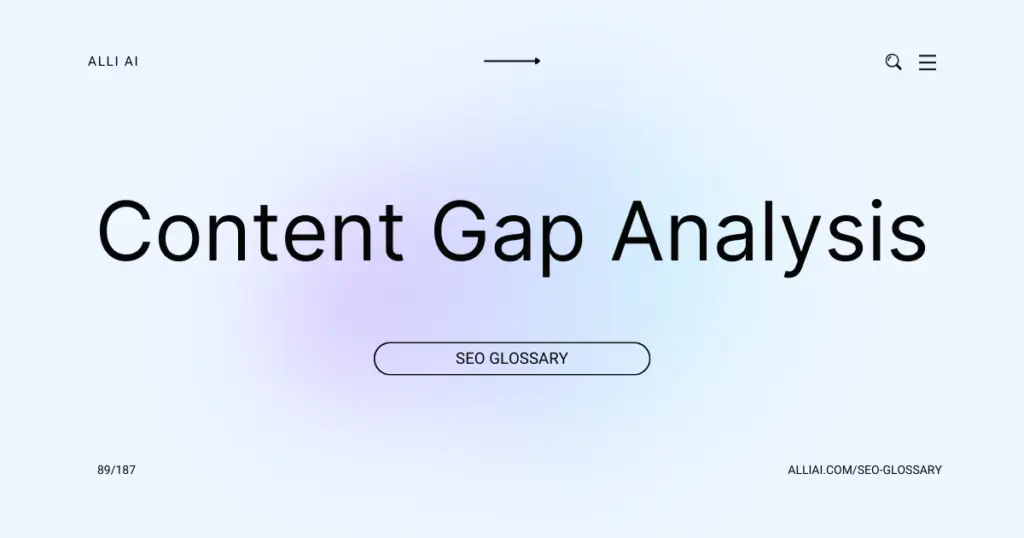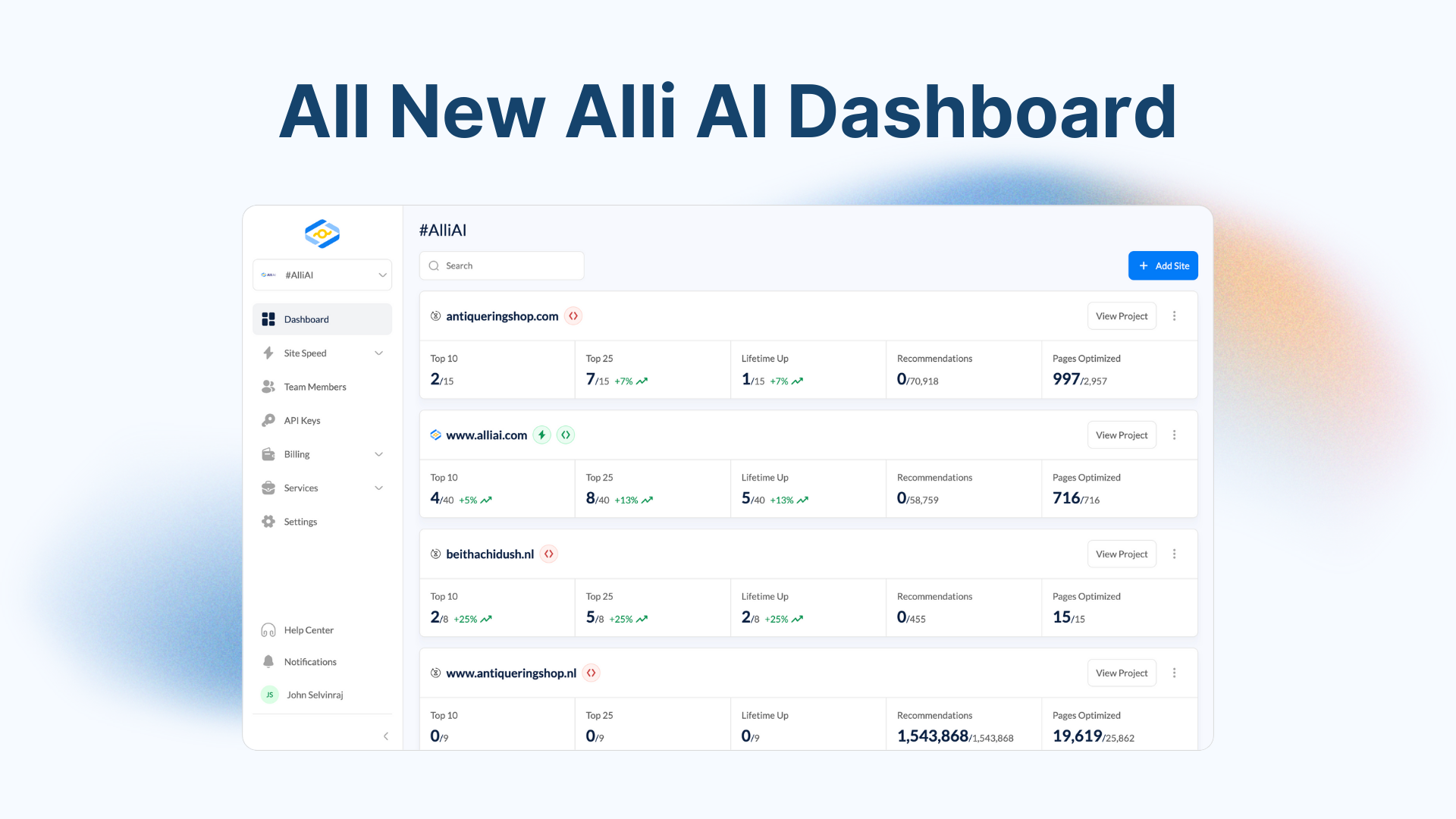What Does Content Gap Analysis Mean?
Content Gap Analysis is a method used to identify missing content areas on a website that could be valuable for attracting more visitors and improving engagement. It involves analyzing your content, comparing it to competitors, and discovering topics or keywords that are not yet covered on your site but are relevant to your audience. This analysis helps in planning content strategies to fill those gaps, thus enhancing the site’s overall performance in search engine results.
Where Does Content Gap Analysis Fit Into The Broader SEO Landscape?
Content gap analysis fits into the SEO landscape as it identifies missing elements or opportunities within your content that can help improve search engine rankings and user engagement. By analyzing what content competitors are ranking for but your site is not, this process helps in pinpointing keyword or topic deficiencies. This enables you to produce content that fills these gaps, potentially increasing your site’s organic search visibility and authority. It also ensures alignment with user search intent, keeping your content relevant and competitive. Additionally, this analysis can guide updates to existing content, adding missing keywords, topics, or responding to user questions that competitors are already addressing.
Real Life Analogies or Metaphors to Explain Content Gap Analysis
1. Filling in a Puzzle: Imagine you’re putting together a large jigsaw puzzle. You have most pieces in place, but there’s a noticeable gap right in the middle. Content gap analysis is like identifying where you’re missing puzzle pieces in your website content — pieces that would complete the picture and answer your audience’s questions fully.
2. Gardening: Think of your website as a garden. As you walk through it, you notice patches where nothing is growing — these bare spots could be filled with plants that your visitors would love. Content gap analysis helps you find and cultivate these empty spaces, planting exactly what’s needed to make the garden flourish.
3. Mapping a Journey: Planning a road trip is exciting, but what if you discover there are gaps in your map? You wouldn’t know what you’re missing along the way. Content gap analysis is like filling in these map gaps, ensuring you provide a complete route with all the necessary landmarks for your readers’ journey through your content.
4. Cooking a Meal: Imagine you’re cooking a dish that’s good but feels like it’s missing something — a spice or ingredient that could elevate it from good to great. Content gap analysis is like tasting and tweaking, figuring out what’s missing that could make your content fully satisfying to your audience’s palette.
5. Tailoring a Suit: A tailor adjusts a suit to fit perfectly, ensuring no part is too loose or tight. Content gap analysis tailors your content strategy, adjusting where necessary so everything fits your audience’s needs perfectly, without any gaps where information is lacking.
How the Content Gap Analysis Functions or is Implemented?
1. Identify Your Competitors:
– Compile a list of direct and indirect competitors who rank well in your niche.
2. Collect Keywords:
– Use SEO tools (like Ahrefs, SEMrush) to extract the keywords that your competitors rank for but your website does not.
3. Analyze Keywords:
– Sort these keywords by metrics such as volume, relevance, keyword difficulty, and SERP features optimizing for those most beneficial to your business.
4. Content Inventory:
– Catalogue existing content on your site to identify current rankings and pinpoint areas lacking coverage or depth.
5. Gap Identification:
– Compare the competitor keywords with your content inventory to spot the gaps—keywords and topics you should target but currently don’t.
6. Strategic Planning:
– Based on the analysis, prioritize the gaps. Decide which topics or keywords offer the most value and align best with your content strategy.
7. Create/Update Content:
– Develop new content or enhance existing content to fill identified gaps, ensuring it’s optimized for both users and search engines.
8. Monitor & Adjust:
– Track the performance of new and updated content. Use insights from analytics to refine your approach and continuously update your gap analysis for sustained relevance.
Impact Content Gap Analysis has on SEO
Content Gap Analysis primarily enhances SEO performance by identifying missing content themes or topics that competitors cover but your website does not. This analysis helps in refining keyword strategies, thereby improving content relevance for search queries that were previously overlooked. As a result, it can lead to better rankings on search engine results pages by targeting keywords with high search volume or low competition.
Furthermore, Content Gap Analysis can significantly enhance user experience by ensuring that your website provides comprehensive and authoritative information that meets user needs and intent. By filling these gaps, users are more likely to find value in your content, stay longer on your site, and reduce bounce rates. This detailed and focused content approach fosters trust and positions the website as a thought leader in its niche, potentially increasing both direct traffic and repeated visits.
Incorporating missing content that aligns with user search intent also ensures broader content coverage across various stages of the customer journey. This not only improves conversions but also supports SEO through enhanced engagement metrics like time on page and pages per session, which are positive signals to search engines. This method of optimization ensures logical and thematic completeness of the content, which in turn improves site structure by interlinking related topics, thereby passing SEO value between pages through improved internal linking.
SEO Best Practices For Content Gap Analysis
1. Identify Key Competitors:
– Use tools like Ahrefs, SEMrush, or Ubersuggest to identify top-ranking competitors for your niche or specific keywords.
2. Collect Competitor Data:
– Extract data about the content, such as the topics they cover, the keywords they rank for, the structure of their content, and their SEO strategies.
3. Analyze Your Current Content:
– Audit your existing content to understand what topics you have covered and how they are performing in terms of traffic, engagement, and rankings.
4. Identify Gaps in Content:
– Compare your content with your competitors’ to pinpoint missing topics, keywords that you don’t rank for, or types of content that your competitors utilize but you do not.
5. Keyword Research for Gap Analysis:
– Use keyword research tools to find high-value keywords within these identified gaps. Focus on those with good search volume and manageable competition.
6. Plan New Content:
– Based on the identified gaps and keywords, create a content plan to produce new articles, blog posts, videos, or other content types that address these gaps.
7. Enhance Existing Content:
– Modify and update existing content to include missing keywords and improve overall quality, ensuring that it meets SEO standards and user expectations.
8. Optimize Content Structure:
– Use headers, subheaders, bullet points, images, and other formatting tools to make your content easy to read and navigate.
9. Use Internal Linking:
– Implement strategic internal linking to new and updated content to boost page authority and improve SEO.
10. Monitor Performance:
– Regularly track the performance of the new and updated content to see improvements in rankings, traffic, and engagement. Use tools like Google Analytics and Google Search Console.
11. Refine Strategy:
– Based on the performance data, refine and adjust your content strategy continuously to improve results and fill new gaps as they emerge.
Common Mistakes To Avoid
1. Relying Solely on Automated Tools: Over-dependence on automated tools can lead to overlooking nuanced topics or new trends not yet prevalent in data. Mitigation involves complementing tools with manual searches, competitor content reviews, and industry forums engagement.
2. Ignoring Long Tail Keywords: Focusing only on high-volume keywords might cause you to miss out on niche topics with high conversion potentials. Include long-tail keywords in your analysis to capture more specific, less competitive queries.
3. Failing to Consider Search Intent: Not aligning content with the actual intent behind search queries can lead to irrelevant content creation. Carefully analyze the types of content (informational, transactional, etc.) that rank for your target keywords.
4. Neglecting Competitor Analysis Depth: Merely skimming competitor content without deep analysis can result in missed opportunities. Dive deeper by evaluating the content structure, quality, and engagement metrics of competitor pages.
5. Overlooking Content Formats: Limiting your analysis to one type of content, such as blog posts, reduces the scope of your strategy. Assess various content formats like videos, podcasts, and infographics that may also address content gaps.
6. Static One-Time Analysis: Content gaps can evolve as new trends emerge and customer interests change. Regularly update your content gap analysis to remain relevant and competitive.
7. Not Utilizing User Feedback: Ignoring direct user feedback, such as comments or social media interactions, may lead to a misalignment with audience needs. Incorporate user feedback mechanisms into your content planning.
8. Lack of Stakeholder Input: Overlooking input from other departments like sales or customer service can lead to gaps in addressing real customer questions and concerns. Involve various teams in the content gap identification process.
9. Inadequate Keyword Difficulty Assessment: Targeting highly competitive keywords without the means to rank for them can waste resources. Match keyword difficulty with your site’s authority and niche specificity.
10. Missing Regional or Local Variations: Not accounting for geographical nuances in search behaviour can lead to underperformance in specific markets. Include local keywords and regional content preferences in your analysis.
11. Poor Follow-up on Content Performance: Creating content to fill gaps without analyzing its performance leads to inefficiencies. Set up metrics for success upfront and regularly review content performance.






